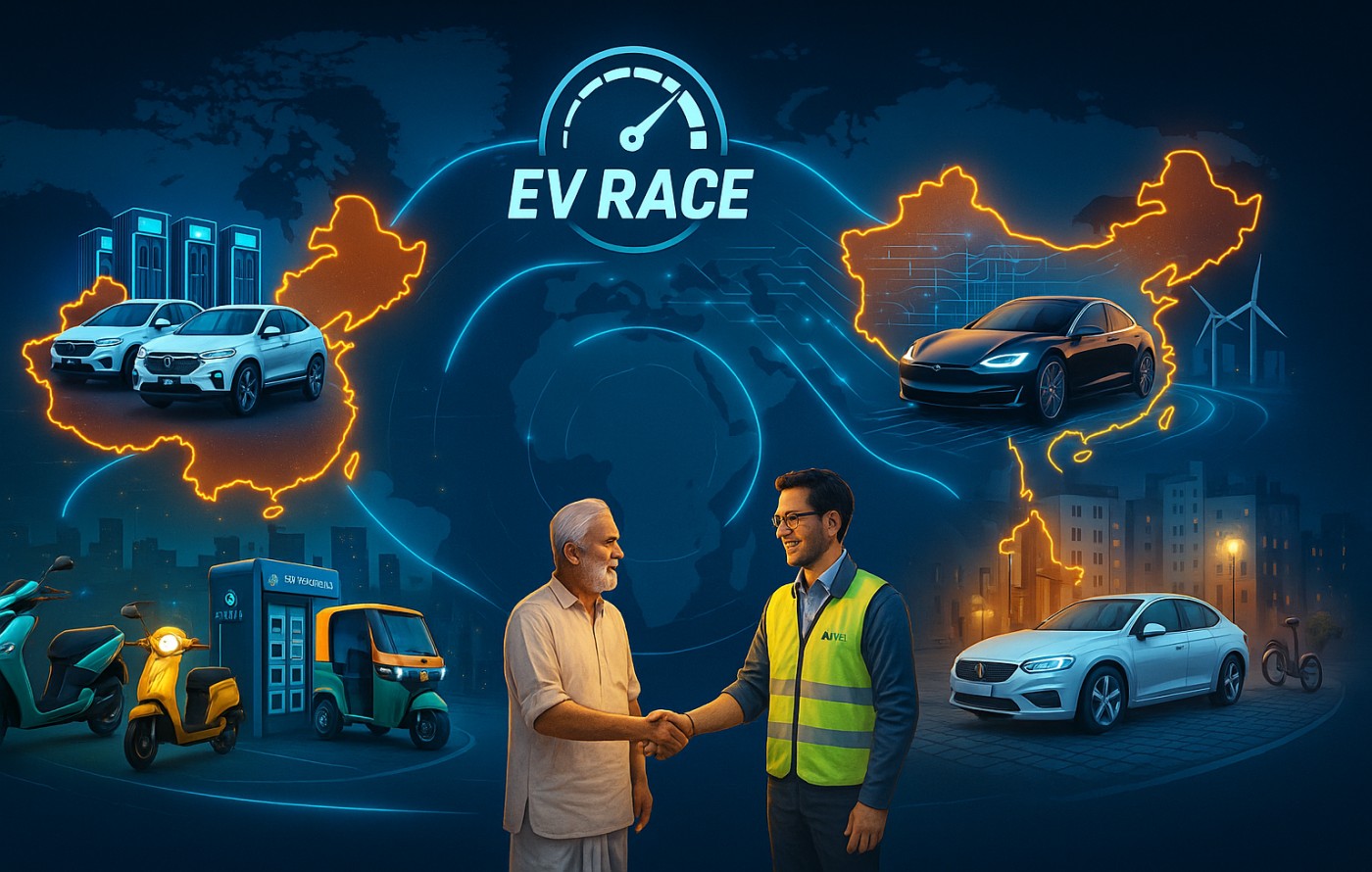
The Global Race for EV Supremacy: Who’s Leading and Why?
- By SDC EV
The global electric vehicle (EV) race isn’t just about cleaner air or climate goals—it’s an economic, technological, and strategic battle for mobility dominance. In the last five years, the EV market has shifted from experimentation to mainstream disruption. And today, the competition is fierce.
China, the US, and the European Union (EU) are leading the charge—each with its own playbook. Meanwhile, countries like India are preparing to ride the next wave. So, who’s winning this global race, and what can emerging EV nations like India learn from the front-runners?
Let’s plug in.
🇨🇳 China: The Undisputed EV Superpower
China is miles ahead in the EV race—both in scale and strategy. As of 2024, China accounts for:
Over 60% of global EV sales
The world’s largest EV automaker: BYD
The strongest EV battery supply chain (CATL, CALB)
Over 1.8 million public charging points—the largest network worldwide
✅ Why China Leads:
Aggressive policy support: Subsidies, tax breaks, and quota mandates
Vertical integration: China controls raw materials, battery production, and vehicle assembly
Mass-market focus: EVs priced for everyday buyers, not just elites
Global expansion: Chinese EVs are now being exported across Asia, Europe, and even Latin America
What India Can Learn:
Build local EV supply chains
Incentivize R&D and scale in battery manufacturing
Invest in nationwide public charging, especially in Tier 2 & 3 cities
🇺🇸 United States: The Tech-Driven Challenger
The US EV scene is led by innovation, not volume. Tesla remains the face of the American EV dream, but the landscape is expanding with Ford, GM, Rivian, and Lucid Motors in the mix.
With the Inflation Reduction Act (IRA), the US has pledged billions in EV and battery subsidies, sparking:
Domestic battery gigafactories
Investments in EV charging corridors
Consumer incentives of up to $7,500 per EV
✅ Why China Leads:
Tech ecosystem advantage: Software, AI, autonomous driving
Strong capital markets: Funding for EV startups and innovation
Clean energy integration: Tying EVs into renewable grids and storage
What India Can Learn:
Develop smart, connected EVs
Encourage EV startup funding
Support clean energy integration (solar + EV = win-win)
🇪🇺 European Union: The Regulatory Powerhouse
Europe’s approach is policy-first, industry-follow. With deadlines like 2035’s ICE vehicle ban, the EU is pushing automakers toward a cleaner future.
Top EV adopters include Norway, Germany, and the Netherlands. European brands like Volkswagen, Renault, and Volvo have heavily retooled to go electric, while charging infrastructure across cities and highways has expanded rapidly.
✅ Why China Leads:
Strict CO₂ regulations
Government-backed EV charging networks
Massive R&D funding for battery tech and recycling
Focus on sustainable manufacturing
What India Can Learn:
Build long-term policy stability
Enforce emission mandates with clarity
Design recycling and second-life battery programs early
🇮🇳 India: The Emerging Contender
India is catching the EV wave, with over 3 million EVs sold and an ecosystem that’s rapidly evolving. But it still lags in:
Charging infrastructure
Indigenous battery manufacturing
Supply chain localization
However, the opportunity is enormous:
A two-wheeler-dominated market is ideal for electrification
State-level EV policies are driving city-specific adoption
Domestic startups (Ola Electric, Ather, Yulu, Sun Mobility) are showing real traction
✅ What India Must Prioritize Next:
Battery cell production and lithium refining
Public-private infrastructure rollouts
EV education campaigns for rural and semi-urban users
Consistent policy support over 5–10 year horizons
Final Charge: The Race Is On—And It’s Far from Over
The global race for EV supremacy is about more than selling cars. It’s about who will shape the future of mobility, energy, and industry.
China shows how scale and supply chains win markets.
The US proves that innovation and investment can disrupt rapidly.
The EU reminds us that smart regulation can drive lasting change.
And India? India is the wild card—poised to leapfrog with the right mix of strategy, scale, and speed.
The road ahead is long. But one thing is clear: the EV race isn’t just about who leads today—but who’s building for tomorrow.
